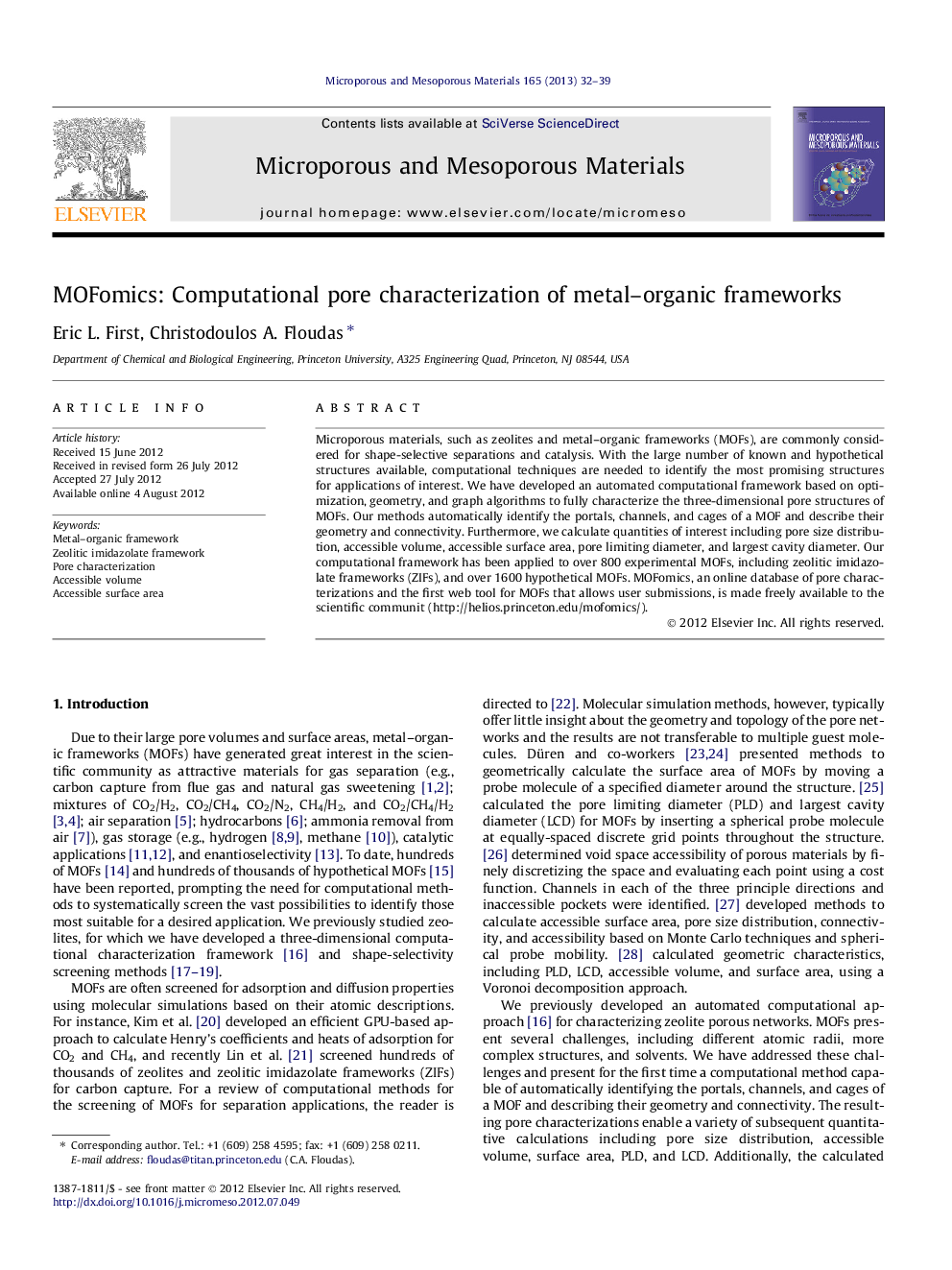| Article ID | Journal | Published Year | Pages | File Type |
|---|---|---|---|---|
| 73908 | Microporous and Mesoporous Materials | 2013 | 8 Pages |
Microporous materials, such as zeolites and metal–organic frameworks (MOFs), are commonly considered for shape-selective separations and catalysis. With the large number of known and hypothetical structures available, computational techniques are needed to identify the most promising structures for applications of interest. We have developed an automated computational framework based on optimization, geometry, and graph algorithms to fully characterize the three-dimensional pore structures of MOFs. Our methods automatically identify the portals, channels, and cages of a MOF and describe their geometry and connectivity. Furthermore, we calculate quantities of interest including pore size distribution, accessible volume, accessible surface area, pore limiting diameter, and largest cavity diameter. Our computational framework has been applied to over 800 experimental MOFs, including zeolitic imidazolate frameworks (ZIFs), and over 1600 hypothetical MOFs. MOFomics, an online database of pore characterizations and the first web tool for MOFs that allows user submissions, is made freely available to the scientific communit (http://helios.princeton.edu/mofomics/).
Graphical abstractFigure optionsDownload full-size imageDownload as PowerPoint slideHighlights► We propose a new computational method to characterize metal–organic frameworks. ► We automatically identify portals, channels, cages, and their connectivity. ► Quantities including accessible volume and surface area are calculated. ► Our method is applied to over 800 experimental and 1600 hypothetical structures. ► MOFomics is a freely available web tool and online database.
